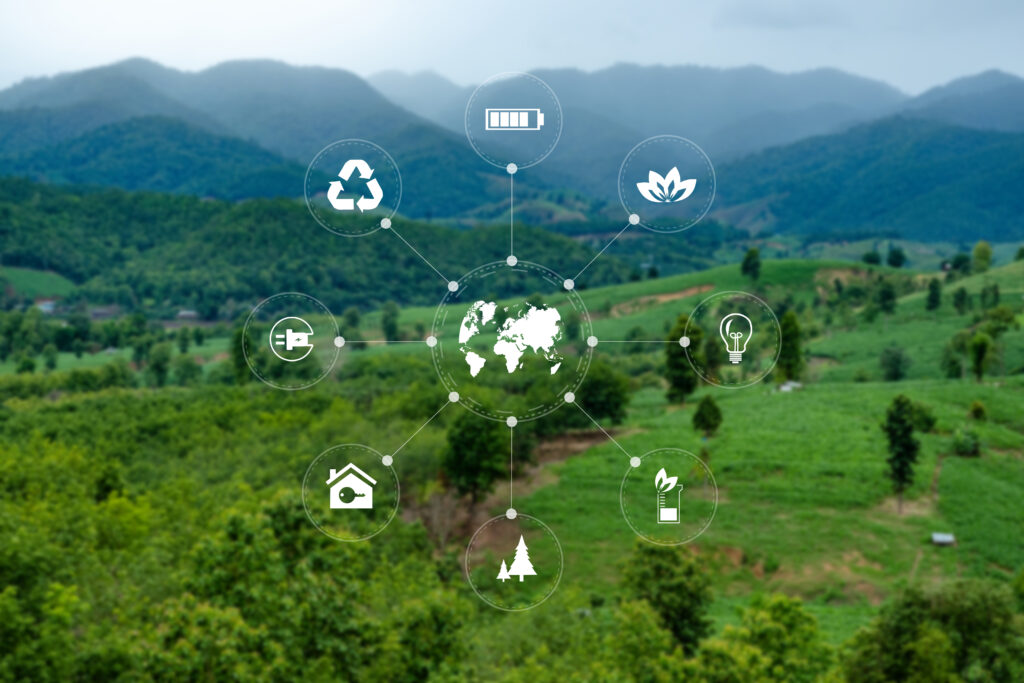Bosnia and Herzegovina (BiH) is often described as a land of natural beauty and cultural diversity. While this is true, the country’s development path has been anything but straightforward. BiH is a country that has faced post-war reconstruction, economic transition, and rural depopulation alongside brain drain. BiH has had to find creative ways to stimulate growth while protecting its environment. In recent years, sustainable tourism has started to emerge as one of those strategies, even if the process is still ongoing and far from perfect. More importantly, this trend is becoming increasingly relevant in the context of the United Nations Sustainable Development Goals (SDGs), especially SDG 8 (Decent Work and Economic Growth), SDG 13 (Climate Action), and SDG 15 (Life on Land).
One example of this can be found in the revitalization project of the old trail connecting Trebinje and Jazina. This 16-kilometer path, which now serves both cyclists and pedestrians, was restored under the “ReTrail” project. While not a massive infrastructure project by certain other global standards, it has had a noticeable impact on the local economy. Many small-scale businesses such as cafes, guesthouses, and even family-run farms have certainly benefited from an increase in visitors. Perhaps more importantly, many locals have begun to view tourism not just as a seasonal opportunity but as a long-term source of income and a livelihood for themselves. This shift is important in the sense that it directly connects to SDG 8, as it helps diversify the economy within the country and offers new employment options, especially in rural areas where formal job opportunities have remained limited.
It is worth mentioning that Bosnia and Herzegovina’s approach to tourism is slowly becoming more environmentally responsible, although issues persist and there is still progress to be made. Projects like “ReTrail” have included basic but meaningful climate-friendly components, such as promoting sustainable construction practices and encouraging tourists to have a more conscious view of nature and their surroundings. In reality, these measures are still in their early stages and are sometimes implemented unevenly across the country. However, they represent a step forward, particularly in the case of supporting SDG 13 by raising awareness about the links between tourism and climate change. While larger, more systematic solutions are needed, these local efforts show that positive change is possible, even if it happens at a gradual pace.
An equally important, but sometimes overlooked, aspect of sustainable tourism here is its connection to the conservation of biodiversity. An example is Livanjsko Polje, which serves as a reminder of the country’s massive environmental potential. Recognized internationally as a Ramsar Wetland of Importance, this area is home to a variety of both plant and animal species. Eco-tourism includes, but is not limited to, birdwatching and guided nature tours, and it has been gaining traction at a gradual pace. This not only supports local livelihoods but also contributes to the protection of endangered ecosystems. It is fair to say that Bosnia and Herzegovina’s engagement with SDG 15 still faces hurdles, such as insufficient funding and weak institutional coordination.
Nevertheless, small-scale initiatives, often driven by local communities or NGOs, have managed to keep the conservation of biodiversity on the agenda.
Sustainable agriculture plays an increasingly prominent role in the country’s rural development, especially where it intersects with tourism. In the town of Neum, for example, local olive growers have started to combine their traditional production with tourism activities. Visitors who arrive are invited to learn about olive oil production, taste local products, and even participate in harvesting during the season. These initiatives not only help preserve traditional farming practices but also contribute to SDG 12 (Responsible Consumption and Production) and SDG 2 (Zero Hunger). Still, this model is relatively new and has yet to reach its full potential, particularly when it comes to attracting larger numbers of tourists or integrating into national tourism strategies.
Another notable project is the USAID-funded “Turizam” which has tried to bring more structure and support to this sector. By working with small and medium-sized enterprises, the project itself has offered financial and technical assistance to improve sustainability practices and make businesses more competitive. While the long-term impact remains to be seen, such programs have at least provided momentum for linking tourism, agriculture, and environmental protection more effectively with each other.
Another noteworthy development that is worth mentioning has been the expansion of the protected areas and the eco-tourism routes across the country. The establishment of the Neum-Klek peninsula reserve is one such example. Here, local farmers and tourism industry workers are starting to adopt more sustainable practices, in part due to growing demand from environmentally conscious tourists. While the full effects of these efforts are still uncertain as their results will be shown with further development of the tourism industry, they represent a positive trend in making connection, conservation, and community-based tourism. Similar efforts are being observed in other parts of the country, although they often depend on limited local capacities and external funding.
To conclude, Bosnia and Herzegovina is taking meaningful, albeit gradual, steps towards aligning these differences. Progress is uneven, and the structural challenges persist, especially regarding governance and infrastructure, as well as the lack of a concrete long-term tourism strategy. On the other hand, through the examples mentioned, it has been shown that sustainable tourism is not just an idea any longer, but rather it is an area where real change, even if small, is happening. With continued efforts and investments, there is potential for BiH to strengthen its position as a sustainable tourism destination that will benefit both the people and the environment.








